Monarch Or Menace?
Scotland’s largest land mammal is also one of its most contentious. Peter Cairns explores the ecological and cultural divide over the Monarch of the Glen.
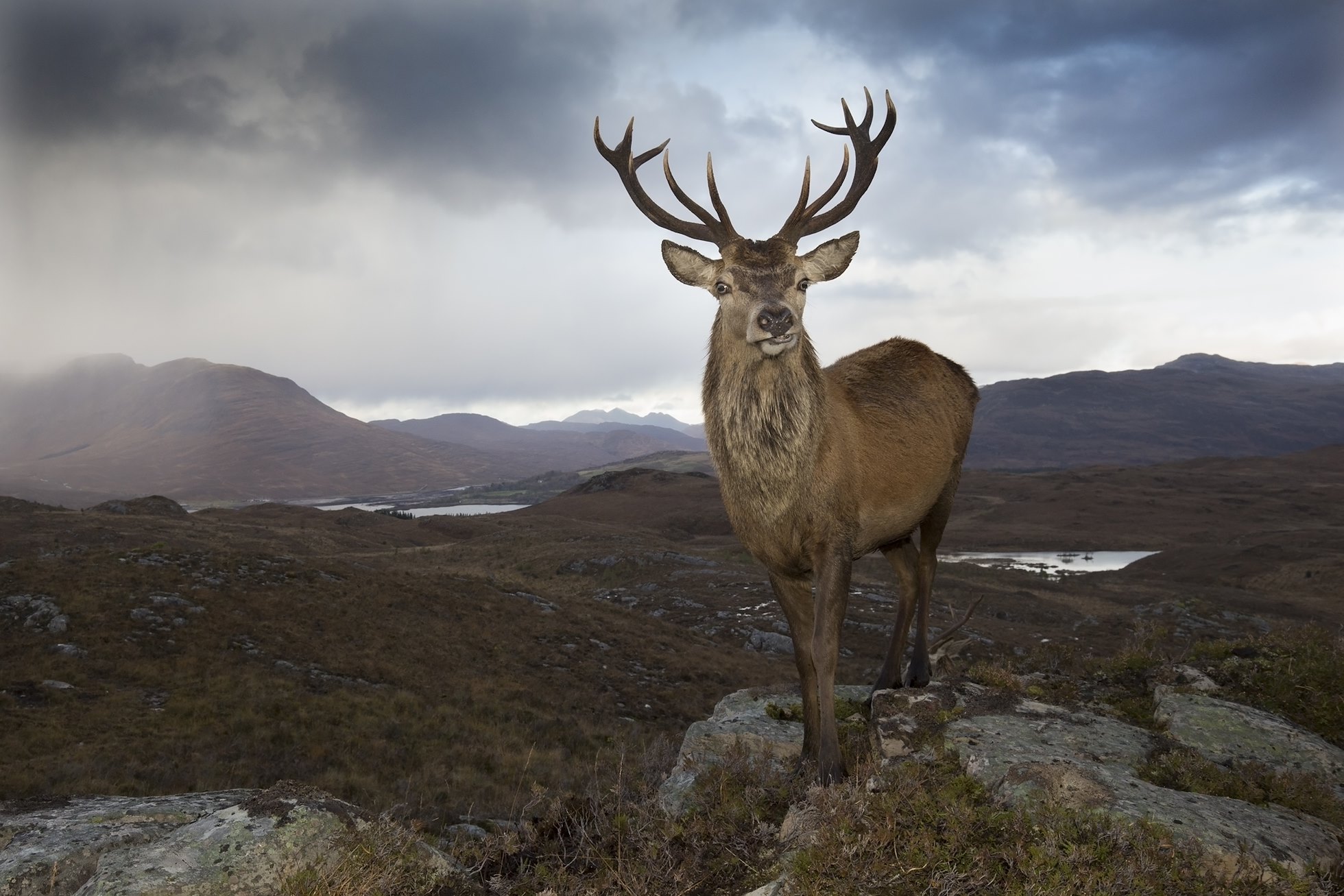
The wind is straight out of the north and bites at my face. Cresting the whaleback ridge, a breath-taking panorama emerges: a raw, wild moonscape stretching far beyond a horizon I can barely discern.
This unforgiving landscape is quintessentially Scottish. It’s the signature landscape of the Highlands, dominated by hundreds of thousands of acres of bare moorland, rock and bog. In front of me lies Inverpolly Forest, undoubtedly spectacular, but barely a tree, or even a bush to be seen. This is a traditional hunting forest, or more specifically, a deer hunting forest, which by definition contains few trees.
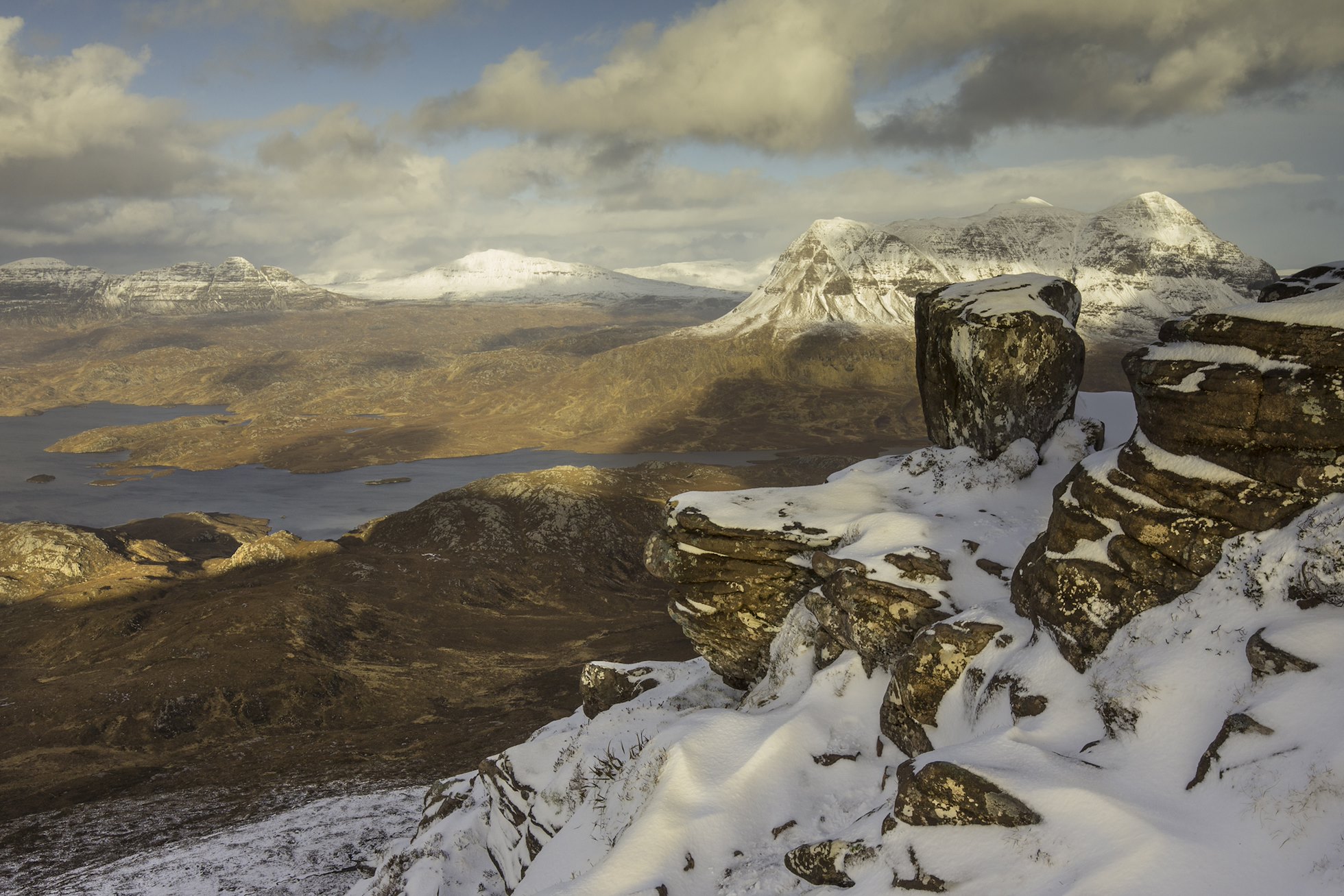
In 1851 when celebrated artist Edwin Landseer depicted a royal stag against the majesty of the Highlands, he created an evocative and enduring image of Scotland’s hills and glens, thereby sealing a tradition in which wealthy Victorian industrialists came to the Highlands paying handsomely to shoot deer – particularly big trophy stags.
Approaching two centuries later, deer hunting, or stalking, remains at the cultural heart of the Scottish Highlands contributing to land values, providing jobs and for many people, binding rural communities together.
Since the advent of deer forests, the uniquely Scottish tradition of open hill stalking has changed little and the barren uplands that cover around 1.5 million hectares of Scotland’s wildest country, remain emblematic of a romantic period that many wish to retain. For those landowners, deerstalkers, game dealers and paying rifles, red deer and their treeless forests, symbolise what Scotland looks like. Or rather, what Scotland should look like.
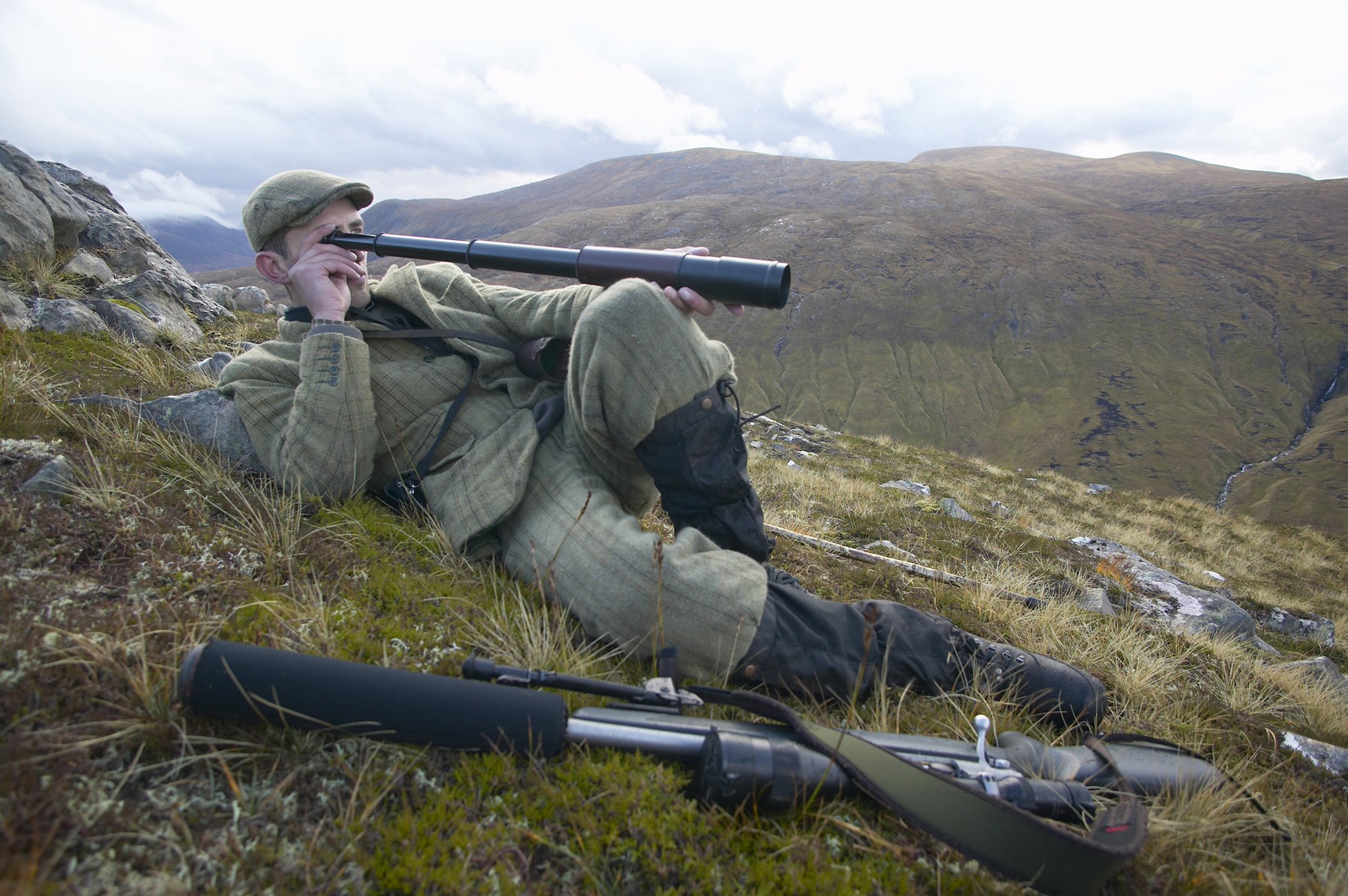
With wolves, lynx and bears long gone, red deer have had plenty of time to proliferate, creating what is routinely referred to as the ‘deer problem.’ In 1959 when the Red Deer Commission was created, primarily to address damage to agriculture and forestry, red deer numbers were estimated at around 150,000. Thirty years later that figure had doubled and today, informed estimates hover around 400,000. Such a high number of hungry mouths inevitably impacts not only on ground vegetation and emerging woodland, but also on the deer themselves. Forced to adapt to a tenuous life in the open and deprived of access to their natural woodland habitat, Scotland’s hill deer are stunted, many a third smaller than their forest-dwelling cousins.
There are also human costs. Each year, 7,000 traffic accidents on Scotland’s roads are attributed to deer and the increasing amount of fencing required to manage their movements often comes out of the public purse.
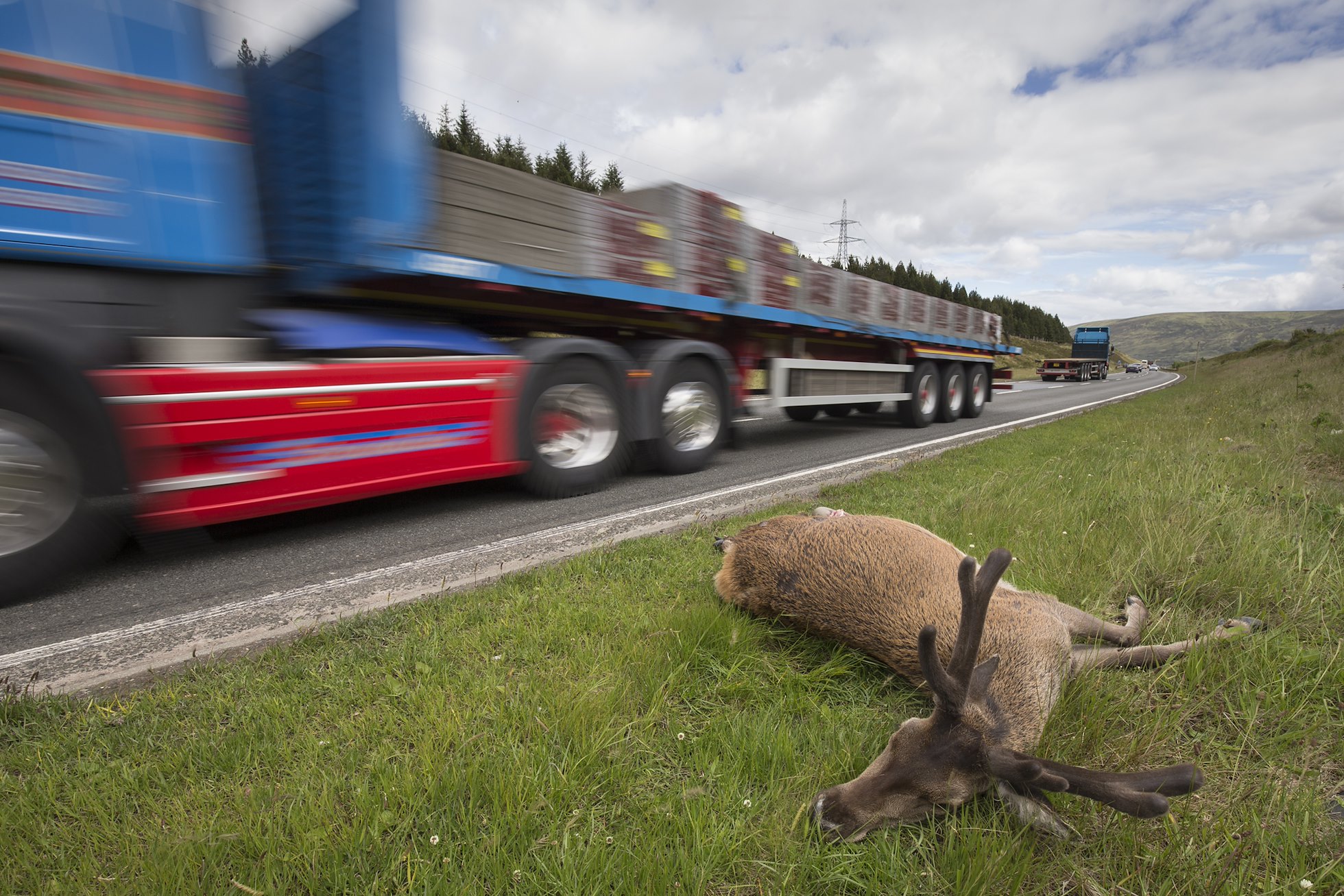
The ‘deer problem’ isn’t new. Acclaimed ecologist Frank Fraser Darling, famously described the Highlands as a “wet desert” and advised the Red Deer Commission that 60,000 might be an optimum population in Scotland. No fewer than seven government-appointed enquiries have sought to address ‘the problem’, yet despite repeated calls for land managers and stalkers to radically reduce deer densities, the numbers in many areas remain stubbornly high.
In recent decades as the impact of over-grazing on the ecological health of the Highlands has become better understood, an ideological battle between traditional deer managers and those who lament the demise of Scotland’s native woodland – now covering just 3% of its natural range - has evolved into a seemingly intractable debate.
Our largest living land mammal is a pawn in what has become a political, rather than ecological, dispute.
How many deer there should be, where they should be and to who's benefit, is not so much an argument over red deer, but over different visions for the future of the Highlands.
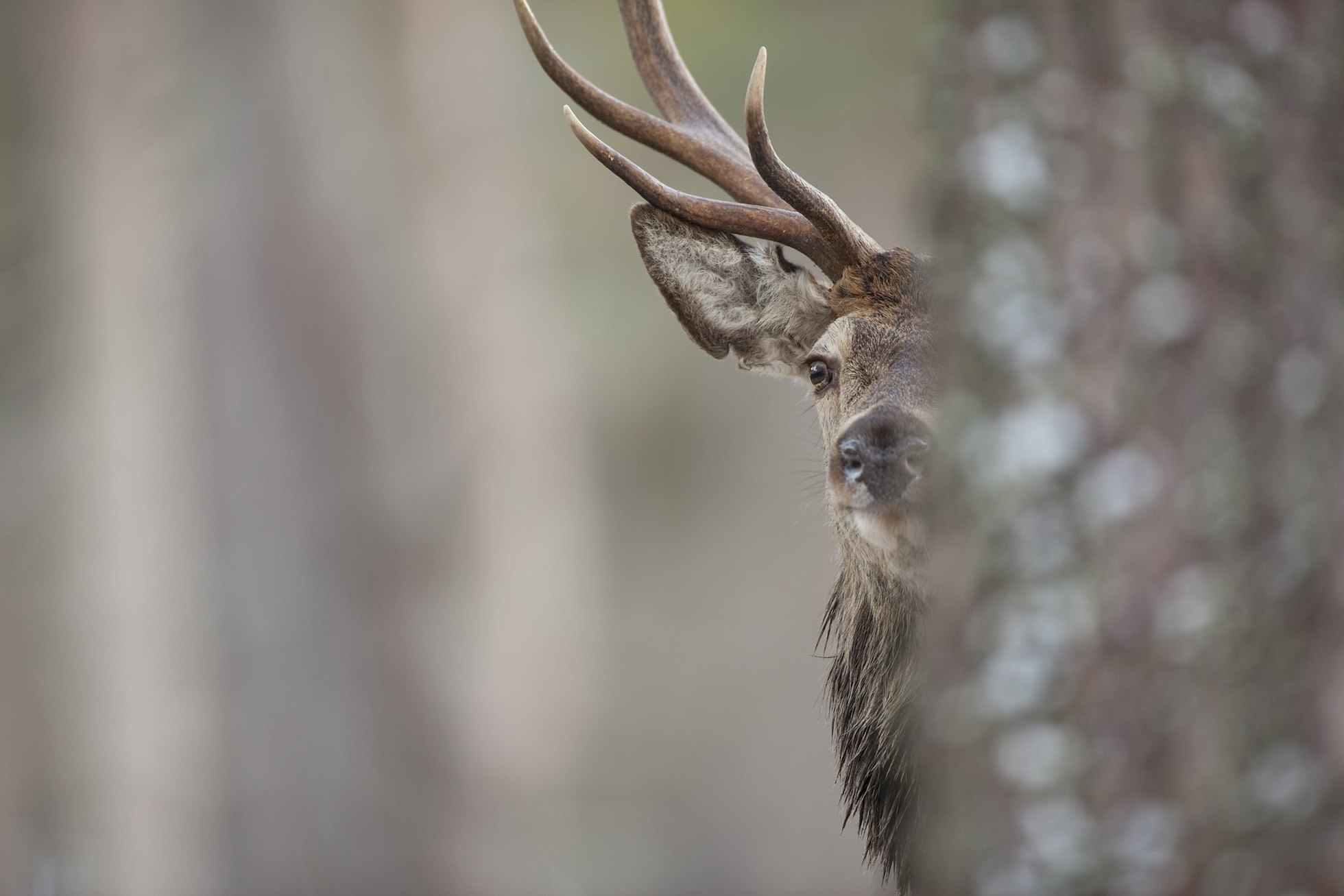
Enter stage left: the rewilder. Increasingly, large chunks of the Highlands are being managed, not as traditional sporting estates but as sites for landscape-scale ecological restoration. At the forefront of this emerging trend is Anders Holch Povlsen, a Danish entrepreneur, who bought the 42,000 acre Glenfeshie Estate in the Cairngorms ten years ago and has subsequently acquired several further landholdings, giving him custodianship over 200,000 acres, all badged under his company Wildland Ltd.
The history of Glenfeshie is not so different from that of other Highland estates. For 200 years or more, the land was valued according to its potential for deer stalking, grouse shooting and salmon fishing. Fencing was widely used to keep deer away from commercial forestry plantations but on the floor of the Glen, remnant ageing Scots pines retained a toehold in the shallow soils. Dick Balharry, the eminent countryman recognised the imminent loss of these veteran trees back in the sixties, and openly condemned the effect of high deer numbers, pointing to a complete absence of young trees. It wasn’t until the turn of the millennium however, that a growing body of environmental legislation, finally ignited change in Glenfeshie and a significant but contentious deer cull took place on the estate.
Thomas MacDonell is Wildland's Conservation Director:
"The change on the ground happened very quickly and with a ready-made seed source from the ageing trees, a young forest quickly started to grow. People talk about the trees creeping up the hill but I would suggest that if you relieve them of grazing pressure, they actually sprint up the hill."
Povlsen’s ambition to combine landscape-scale habitat restoration with wider economic benefits for local communities is a model that is now enticing other eco-philanthropists. Despite the huge size of these private estates, they remain as relative dots on the map. But increasingly, those dots are creeping closer to other dots. Established woodland regeneration schemes run by conservation groups and government agencies, such as those in Abernethy Forest, Creag Meagaidh in Lochaber and Beinn Eighe in Wester Ross, are creating a growing, inter-connected network of landholdings, all committed to a new model for Highland land management. Moreover, these initiatives have all shown that despite long-held perceptions to the contrary, trees can grow in the Highlands without the need for intrusive fencing, as long as grazing pressure is controlled.
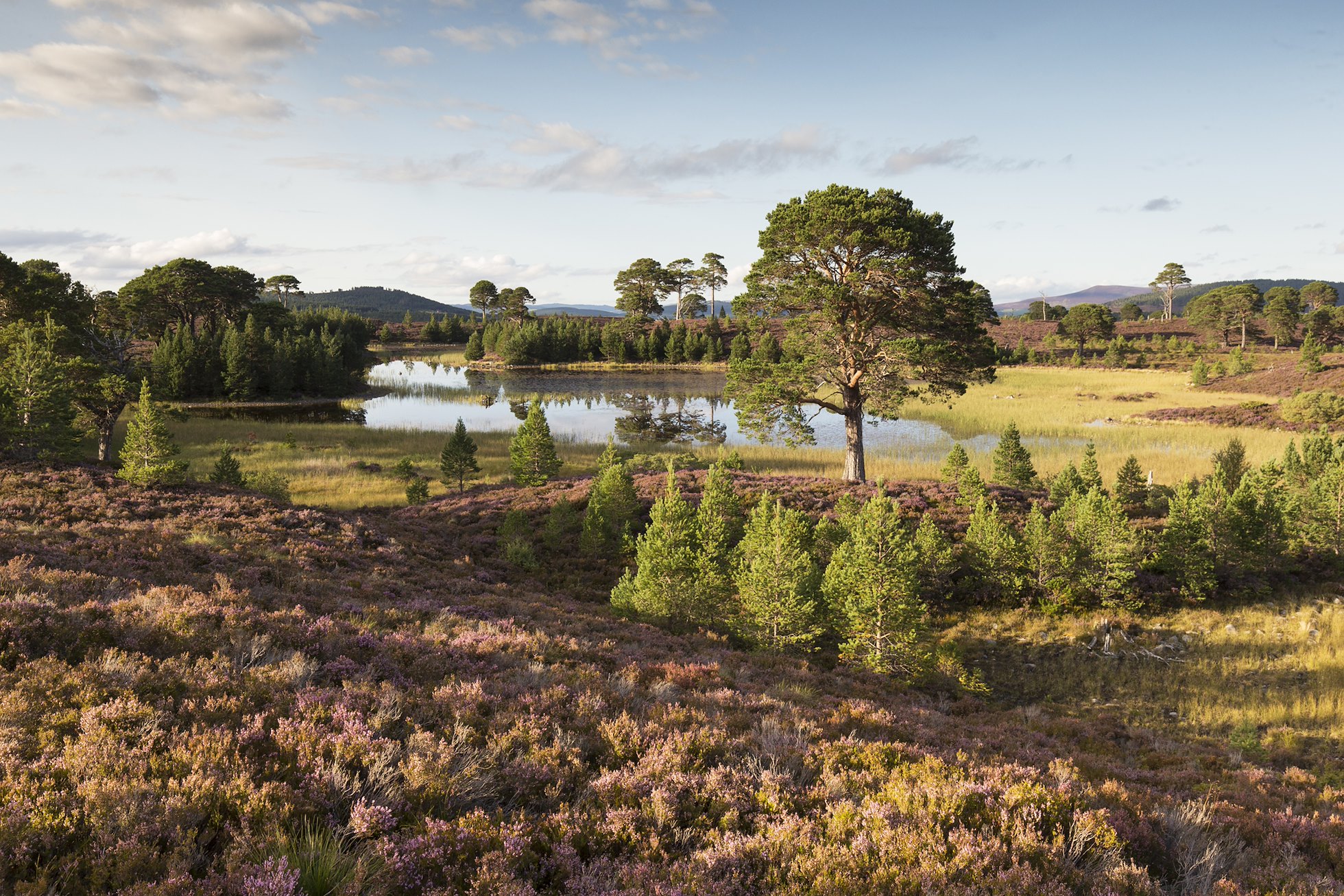
But what does that control look like? How many deer is too many? There is a sizeable body of research that can now answer that question from an ecological perspective. It is generally accepted that to allow ground flora and woodland to regenerate naturally, or planted trees to survive, deer densities need to be no higher than 5 per sq.km. The regeneration of woodland in Glenfeshie has taken place with red deer at around 2 per sq.km. On some traditional stalking estates, 40 animals per sq.km. is not unusual.
Colin Murdoch is an experienced deer stalker on Scotland's west coast and laments the large-scale culls that have taken place in recent years: "I hate what has become the ethnic cleansing of red deer."
Colin is highly suspicious of the motivations of conservationists and government agencies forcing their will on rural life. "They want to see the end of sporting estates although they'll never admit it."
Colin’s perspective is not uncommon amongst traditional deer managers and although his conviction reflects a deep affection for the animals that have shaped his life, it also reveals a resistance to change; change that he sees as a threat rather than an opportunity.
Another rewilder who has attracted much media attention over the last decade is Paul Lister, owner of Alladale Wilderness Reserve in Sutherland. Alladale wants to regenerate its native woodland but is surrounded by estates with high deer numbers, all wedded to the traditional land management model. Red deer don’t recognise estate boundaries and the man in the crosshairs charged with reducing the Reserve’s red deer herd to an ‘acceptable’ level is Head Ranger, Innes MacNeill. “We all want healthier deer living in a better habitat but how do you tell a stalker that has worked all his life to nurture his deer forest, that he has too many? It’s like telling someone their life’s work has been for nothing.”

So does it all come down to numbers? Deer are browsing animals and at high densities, they will overwhelm the vegetation and eat all regenerating saplings, leaving just older trees to die off one by one over time. In the absence of natural predators – for now at least – deer populations therefore need managing if Scotland’s wild places are to reach their full ecological potential and that as a country, Scotland is to expand its woodland cover, currently one of the lowest in Europe. The expertise and experience of professional deerstalkers, is key to this but the philosophy behind deer stalking will need to move away from the emphasis on the trophy, to a more rounded hunting experience in an increasingly natural setting, in the company of a well-paid professional guide.

Flurries of snow come and go as I crest the summit of Stac Pollaidh and reflect on the vast landscape below me. A golden eagle circles on a distant thermal and the occasional chatter of a red grouse carries on the breeze. This landscape is seductive. It is raw and superficially at least, it is wild. It is also loved by the majority of people who live and work in it. And those who visit it. Yet this land hides a history of ecological wounds that few people see, simply because they’re not conditioned to look. Centuries of felling, burning and over-grazing have led to endless miles of treeless moorlands so often held up as postcards of a nature-rich Scotland. As a society we’ve somehow arrived at a point where we celebrate, cherish and even actively conserve these ecological vacuums that support not only fewer species than they once did – than they could again – but in many parts of the Highlands, fewer people.
This landscape could be more. So much more.
I raise my binoculars and trace the path of a deer fence, which bullishly cuts across the moorland into the distance. The fence has been built to keep deer in, or perhaps to keep deer out. Either way, the fence itself is symbolic, as it mirrors the divisive debate over what this landscape should be. For now, it is held in suspension. The potential for an ecologically richer future across much of the Highlands, is stuck inside a cultural fence. It’s a fence that has less to do with red deer and more to do with people and their deep-seated belief systems. The deer problem, if it exists, is actually a people problem, 200 years in the making.


